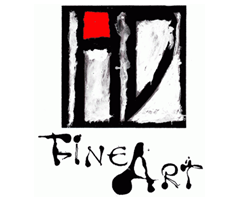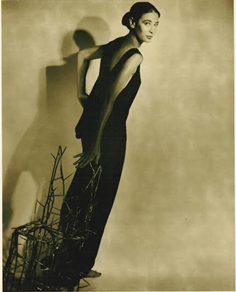Product Description
Michele Oka Doner Terrible Chair sculpture (unique) 1981


MICHELE OKA DONER (b. 1945) USA
Terrible Chair (unique) 1981
Gilded bronze
Illustrated: Michele Oka Doner, Natural Seduction, S. Ramljak, M. Lapidus, A. C. Danto (New York: Hudson Hills Press, 2003), p. 85
H: 31 ½” x W: 15” x D: 17 ½”
Excerpt from “The Furniture of the Universe” by Arthur C. Danto in Michele Oka Doner: Natural Seduction (New York: Hudson Hill Press) 2003 p. 30
The Terrible Chair
What drew me initially to the work of Michele Oka Doner was the way it acknowledges the rhetoric of sitting and the metaphorical language of furniture and, most particularly, of the chair. Consider, for examples, the work she calls Terrible Chair which a distant affinity to Adirondack furniture as it is cast from a prototype fashioned out of branches. The Adirondack chair itself refers more directly to the forest; it is made of branches and looks as If nothing more than an axe or a hunting knife were needed to construct it. It proclaims the skill of the woodsman prevailing over the forest by seeing it in terms of opportunities for survival rather than representing threats and dangers. The Adirondack chair is a domesticated tree, a bower and as much a testament to the superior power of the seated as a chair with clawed or hoofed legs, in which we sit as master over beasts. The proper habit for it is the hunting lodge, with bearskin rugs suitably prone on the look or the long veranda of a mountain chalet.
Terrible Chair is made of thorned branches, which have a certain menacing beauty but no real use unless to fashion a mocking crown. Oka Doner is drawn to natural objects; they are her models and her motifs, the source of her metaphors. She saw a thorny branch that she found on a neighbor’s property a clear challenge: “The way the thorns were arranged was exquisite,” she recalled. But those same thorns were too threatening to invite physical approach. A thorned plant has an evolutionary advantage because it refuses to yield to human use. This was an irresistible dare to an artist bent on turning the natural into the meaningful.
Terrible Chair is a victory; it defines what it means to be an artist in Oka Doner’s conception of that role. It is equally a victory for the thorns because the utility promised by the chair they form remains unavailable to sitters: the thorned sticks are available only as art but not for use. The radical unusability of the work constitutes a draw in the match with nature, and the bronze in which it is cast forms a suitable monument to that context. Terrible Chair enshrines an objective contradiction.
Nonetheless, the components of the Terrible Chair are combined to form a chair, but because there is no seat, no one would know how to use it in a conventional way. There have been treacherous chairs that have concealed their treachery, subverted the confidence shown in the act of sitting—chairs that collapse beneath their users, The Marquis de Sade offered chairs to female sitters that rotated them through an abrupt arch onto their backs and into a position of sexual accessibility from vertical dignity to horizontal vulnerability. By contrast, no one is tempted to sit on a Terrible Chair so dignity is at least not put in threat. So what is its meaning? In its outward inhospitality, the work says, in effect, “This chair is not for sitting.” It has to have the form of a chair to deliver this message. It excludes the chair from use as if to underscore the message, it excludes the chair from use as if to deliver the truth that chairs count in the game of meanings, transmitting auras to their occupants. It acquires a fairy tale inaccessibility like the glass slipper in Cinderella into which only the tiny foot of a natural princess can slip. Terrible Chair— a name, the artist told me, her two sons helped select—promises to transform whoever claims it. But clearly we are not its intended occupants. So it stands as a reminder of the higher meanings of chair to those who may have relegated them to the drab language of utility. Through its thorny point, brandished like the spikes on medieval armor, Terrible Chair transfers itself the power that sitting in it would confer.
I think of Terrible Chair as Oka Doner signature work, transmitting the message through its sharp spins that although she makes chairs, she is no a designer but an artist. And though the chair is part of the domestic lexicon, her project is to bring meaning rather than comfort. Should her work provide comfort, it is an incidental by-product of a class that acknowledges human needs but transform their satisfaction into symbolic acts and cosmic endorsements. Gesturing toward the spiky, spiny objects that furnish her tremendous loft—transfigurations of natural forms cast in various metals that carry their own system of meanings—Oka Doner draws attention to the fact that nothing here is upholstered. She likes the hard, the skeletal, the pronged and edgy armature of carapace, the natural scaffoldings t hat give shape and structure to the vulnerabilities of living things. It is the inner architectures whose natural powers we acquires as our own when we use those forms as evocations and signs , in the manner in which peoples who live close to nature use teeth, their claws, the furs and the feathers of wild animals as talismans of great power. Her furniture consists of so many apertures through which the cosmos enters the space of domestic life, transforming a utilitarian object into something that transcends that use and transforms the user into a participants in a celestial trial. Her aim, she confides, is to ritualize ordinary life. And this is an artistic practice far more deeply connected with the meaning than making things to hang on walls or stand in corners simply for visual delectation.
MICHELE OKA DONER (b. 1945) New York, NY
Michele Oka Doner is an internationally acclaimed New York-based artist and designer whose work translates natural forms–plant fronds, berries, shells, and life observed beneath the lens of the microscope–into objects of extraordinary power and seduction rendered in bronze, precious metals and stones, concrete handmade papers, ceramic, and now, glass. Since first appearing on the national scene in 1970 as the youngest artist showcased in the defining landmark museum exhibition Objects USA. Oka Doner has built a career encompassing monumental sculptures, public art, jewelry, and functional objects that range from fireplace tools to evening bags.
Oka Doner was born in Miami Beach in 1945. Though she received her formal education and advanced degrees at the University of Michigan in Ann Arbor, the artist has always cited as her primary laboratory the turbulent natural treasures of Southern Florida’s oceans, tidal pools, beaches, gardens and tropical forests–boundless living resource libraries she visits on a monthly basis to gaze upon and gather samples that later inspire pieces of every size and type. Oka Doner has said that she strives with her work to “play the role of the translator and editor of life forces creating objects that go far beyond static formal beauty to encourage contemplation and wonder.” Informed by her ongoing research into scientific literature and poetry, as well as her expeditions in the natural world, Oka Doner uses the tools of physical expression to invite us along on her wanderings through the realm of the infinite.
Oka Doner is also admired for her numerous site-specific, permanent public art commissions including such projects as the golden tiled Radiant Site at New York’s Herald Square Subway Station (1990) and A Walk on the Beach, a half-mile long expanse of terrazzo and bronze floor continually unfolding at Concourse A of Miami International Airport (1995 to present). Oka Doner’s sculptures and functional objects are included in many prestigous private and public collections, including those of The Metropolitan Museum of Art and the Smithsonian’s Cooper-Hewitt National Design Museum in New York City, the Art of Institute of Chicago and the Virginia Museum of Fine Arts, among others. She has participated in scores of distinguished exhibitions internationally and has been recipient of numerous grants and awards, including honors from the Kress Foundation and the New York State Council for the Arts. In 2004 she received the coveted Award of Excellence from the United Nations Society of Writers and Artists.
Michele Oka Doner Terrible Chair sculpture (unique) 1981
You must be logged in to post a comment.
ALFRED GRENANDER (1863-1931) Sweden / Germany
W. KUMMEL Berlin, Germany (cabinetmaker)
Cabinet (unique) c. 1904
Flamed mahogany, ebony, ivory and fruitwood inlays, brass hardware and details, textured glass
Marks: American import label (from Germany) for the St. Louis exhibition
Exhibited: The 1904 St. Louis Exhibition, German Section in the Herrenzimmer
Illustration of Grenander room: Deutsches Kunstgewerbe St. Louis 1904, Hugo Nachtlicht, 1904, p. 80.
Commentary on Grenander’s display at St. Louis Exhibition: Deutsche Kunst und Dekoration, Band XV Oktober 1904-Marz 1905, “Die Wohnungskunst auf der Welt –Austellung in St. Louis”, Dr. Hermann Muthesius, p. 213-16.
Related bookcase-cabinet illustrated: Deutsche Kunst und Dekoration, Band XVI April-September 1905, p. 426.
For other works by Grenander see: Deutsche Kunst und Dekoration, Band XVI April-September 1905, p. 395-407, 426, 427, 671-73, 694, 695; Das Deutsche Kunstgewerbe 1906, 111. Deutsche Kunstgewerbe-Austellung Dresden 1906, (München, Verlagsanstalt P. Bruckmann A.G., 1906) p. 129-133, 232, 261
H: 79 1/2” x W: 57” x D: 23”
Price: $95,000
Alfred Grenander was born in June 1863 in Skövde, Sweden, and came to Berlin in 1885 to study. The city became his home, and he built his first buildings here together with his brother-in-law Otto Spalding. In 1897 Grenander began teaching at the Unterrichtsanstalt des Berliner Kunstgewerbemuseums (college attached to Berlin’s Museum of Arts and Crafts). His involvement with underground railway architecture began in 1900 and came to dominate his life’s work, with more than 80 buildings. He died on 14 July 1931 in Berlin.
From the turn of the century through the early 1930s, Alfred Grenander provided the emerging metropolis of Berlin with an extensive net of subway stations. He was an architect, draughtsman, and city planner; as well as a remarkable furniture designer. Grenander was the celebrated German representative at the 1904 World’s Fair in St. Louis, where he was being honored as “the renewer of German art.” This mahogany cabinet inlaid with pewter, ebony and ivory was exhibited in the elegant Herrenzimmer of the German pavilion at the Louisiana Purchase Exposition, St. Louis, Missouri, 1904, was bought in 1904 by a Kansas City, Missouri family and the piece descended in the family.
RAYMOND BARGER (1906-2001) USA
Sculpture c. 1955
Polychrome contoured wood of interlocking circular forms in white, blue and pink on a bronze base.
Signed: RB (artist initials), USA, Z0I
H: 8 1/2” x L: 12 ¾” x D: 8
Price: $5,800
Raymond Granville Barger was a sculptor working in metal, plastelin, and bronze among other materials. Barger was educated at Carnegie Institute of Technology and Yale University School of Fine Art. He received a Winchester Fellowship from Yale, and a special fellowship from the American Academy in Rome. Barger moved to California, where he died in 2001.

Reviews
There are no reviews yet, would you like to submit yours?